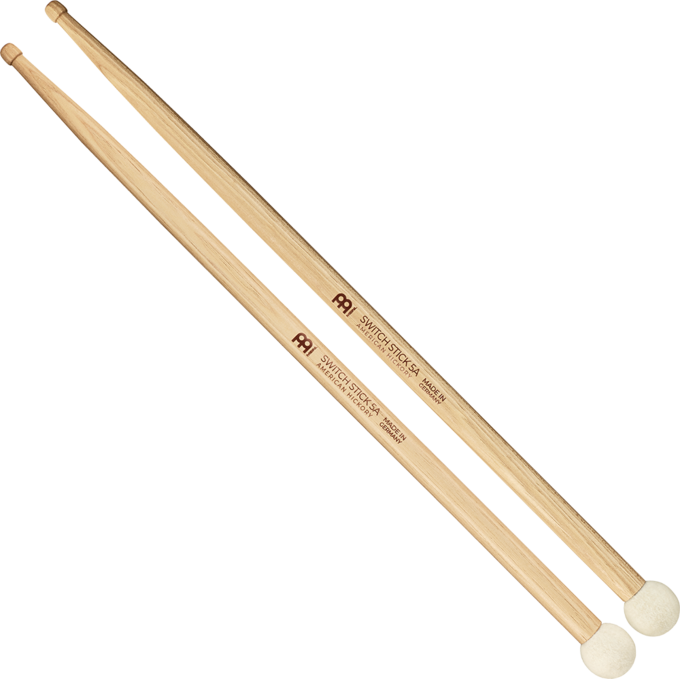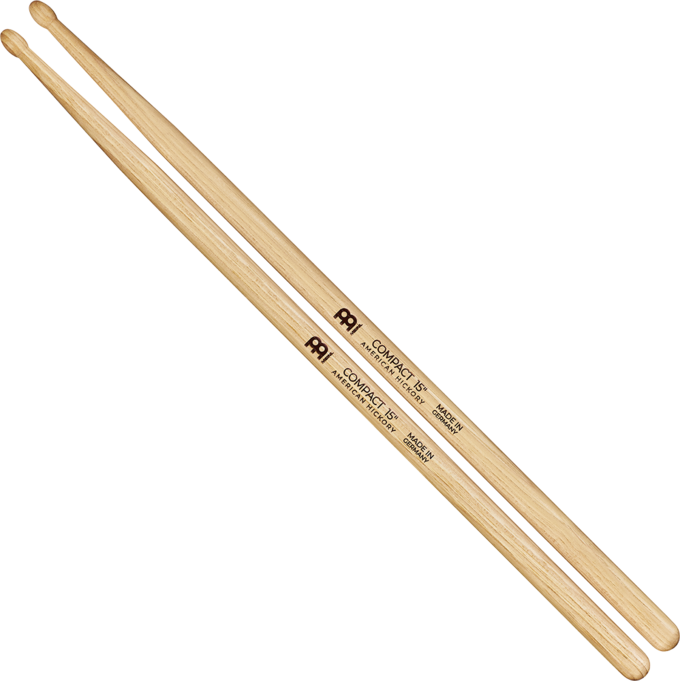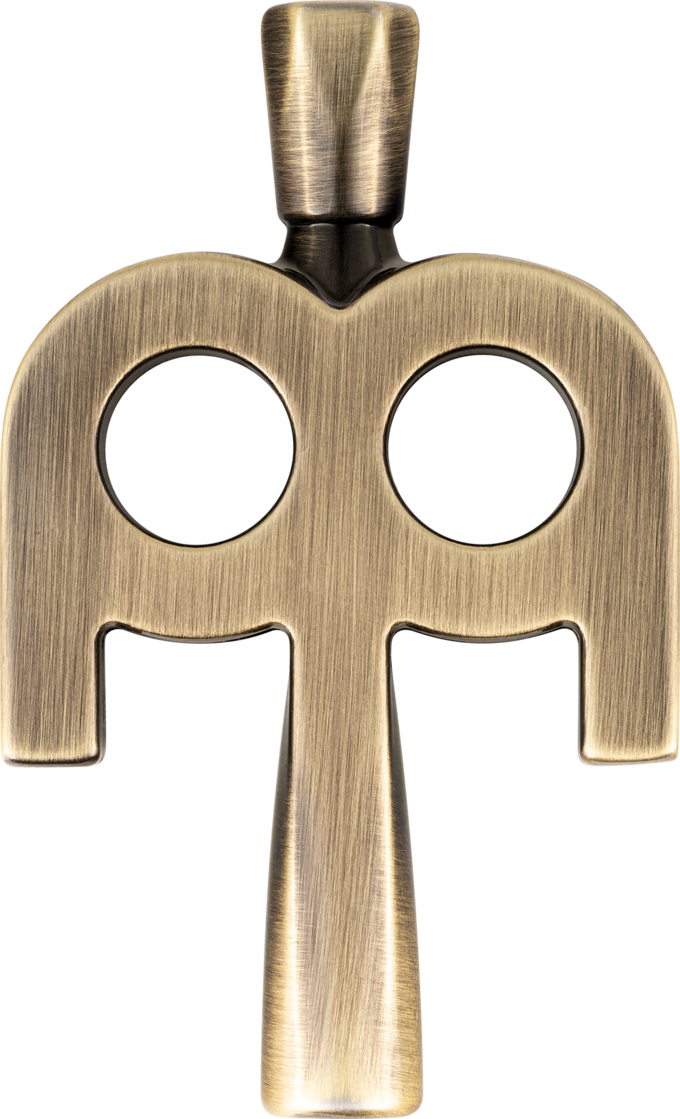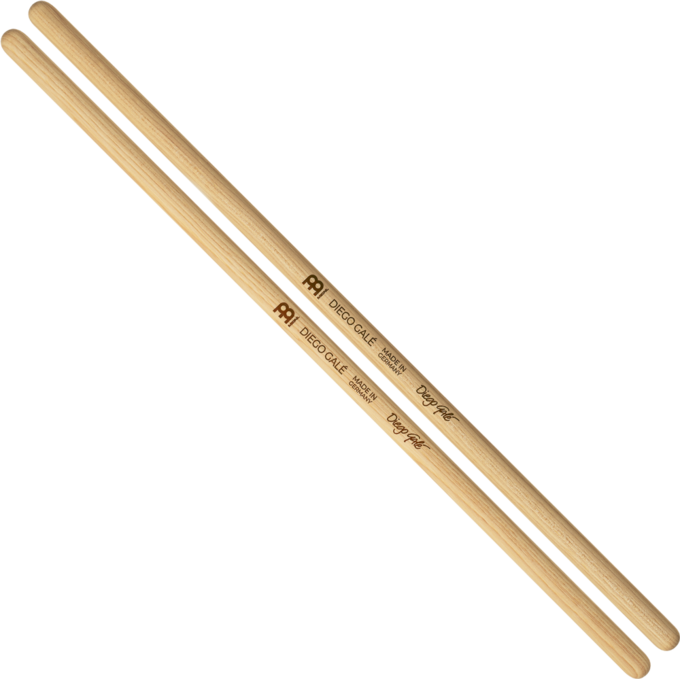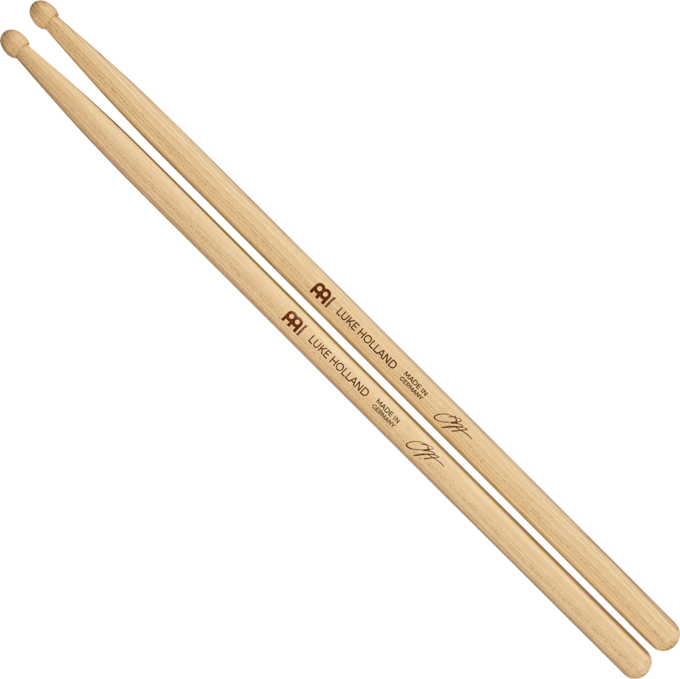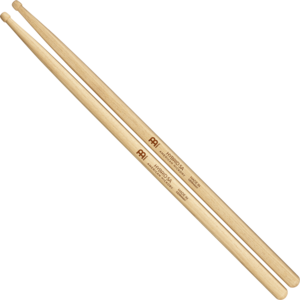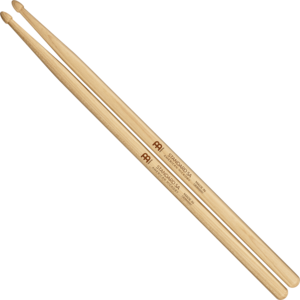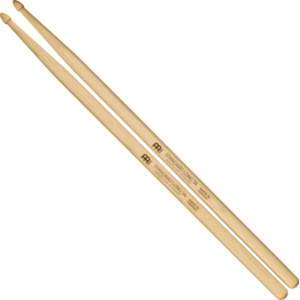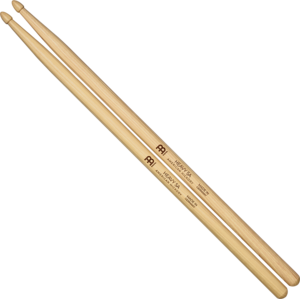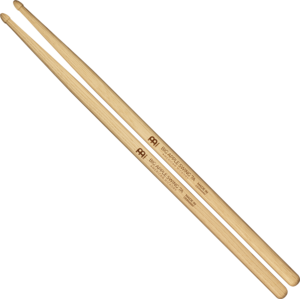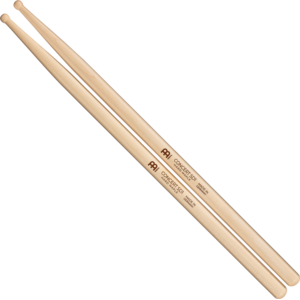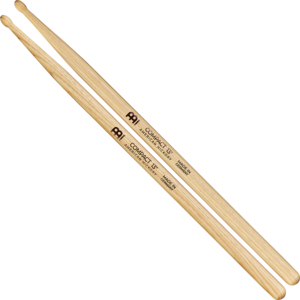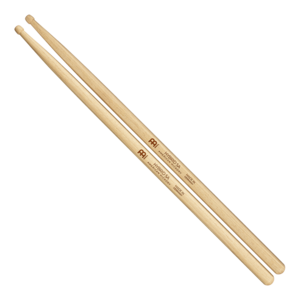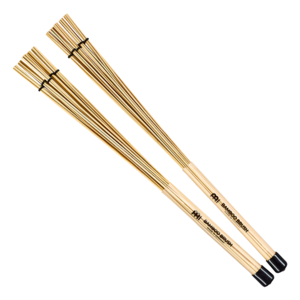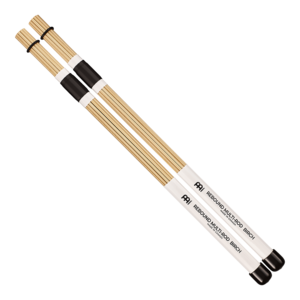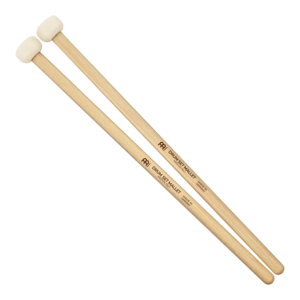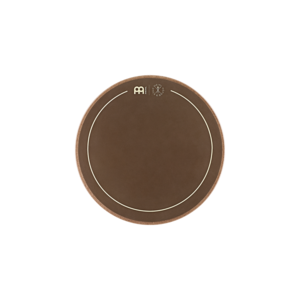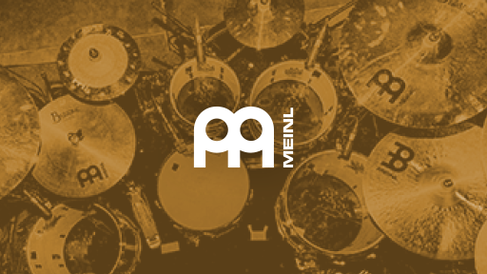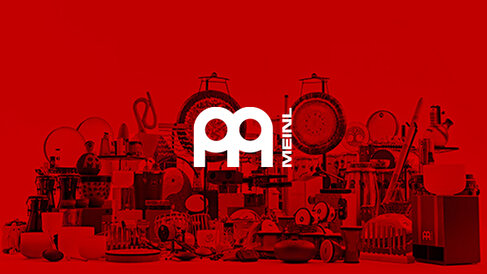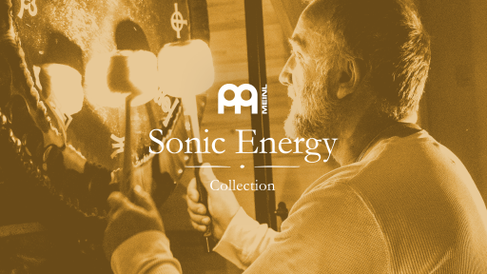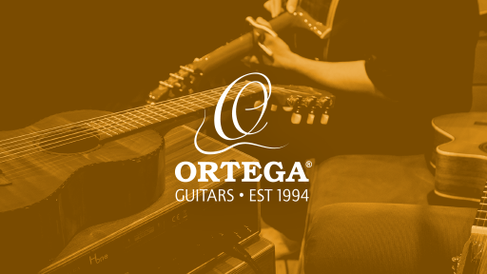Structure of our Sticks
Drumsticks, multi-rods and brushes are the most important tools for any drummer or percussionist, forming a direct link between the player and their instrument.
There are several factors that will influence what the right choice is for each player and their situation. Learn more about the components that make up our Meinl Stick & Brush line and their unique characteristics.
explained

Tip
The tip is the part of the stick that is typically used to transfer the energy of motion from the stick into your drums and cymbals. The tone created is a result of the size and shape of the tip and is most noticed on cymbals. Meinl currently offers several tip choices such as Acorn, Barrel, Round, and Hybrid. The Hybrid tip was created by taking a traditional Acorn tip and cutting the top off for a Barrel length. This produces a unique blend of the two. The Acorn tips are also offered in various sizes. See our stick chart for exact tip of each model.
Neck
The neck is the thinnest part of the stick connecting the tip to the stick.
Taper
The taper begins at the shoulder and ends at the neck thinning along the way. The length and degree of the taper determines how a stick responds off of a drumhead or cymbal surface like a ride cymbal. A stick with a long taper will have more rebound and can feel lighter since more weight is in the shaft, while a stick with a short taper will feel front heavy and more powerful. Additionally, sticks with a shorter and thicker taper are typically more durable when used for lots of crashes and crash-riding.
Shoulder
This is the area of the stick where the taper begins and the shaft ends.
Length
The distance from the tip to the butt end is the length. Sticks with greater length will have more reach like our Standard Long models. Also, sticks with extra length added can provide a better overall balance which is why our Heavy models, which have greater diameters, also have an increased length over Standard models. See our stick chart for exact length of each model.
Shaft
The shaft is the longest part of the stick covering the area that you hold and also where the most punishment for rimshots is absorbed.
Butt
The end of each Meinl stick is rounded for a more comfortable grip.
Diameter
The diameter is the thickness of the shaft. This is the most defining feature of how the stick will feel in your hands. For hard hitters, thicker sticks will transfer more energy and last longer, but thinner sticks may be preferred when touch or quickness is needed. The terms 5A, 5B, 7A and 2B are traditional names for different diameters. Typically, a 7A is a thin stick, a 2B is a thick stick, and 5A and 5B are in the middle with 5B being a little thicker than the 5A. See our stick chart for exact diameter of each model.
explained
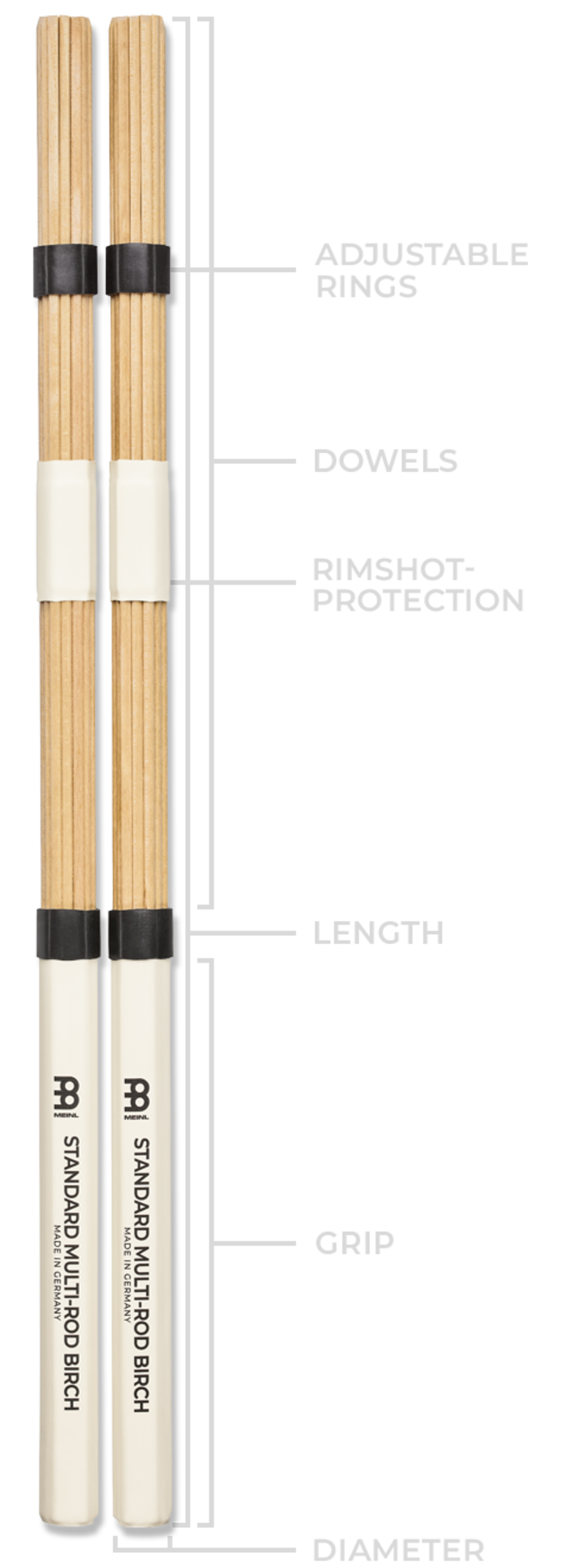
Adjustable Rings
All Meinl Multi-Rods comes with one or two adjustable rings to change the amount of dowel spread. Move these rings to the top end of the stick, the sound gets more focused with greater attack. Move them towards the butt end, and the sound gets softer and has less attack.
dowels
Multi-Rods are created when dowels consisting of different materials such as Birch, Bamboo, Hardwood and Nylon are bundled together. The material used along with the size, thickness and number of dowels determines the sound, weight and response. Thick dowels are great for attack and volume, while thinner dowels, offer lower overall volume and softer attack. Multi-Rods differ from Brushes in that the dowels are generally thicker and more rigid than with Brushes.
Rimshot-Protection
Some of our Multi-Rods are equipped with a rimshot-protection area. This is a re-enforced section that offers optimum protection of the dowels so they last longer. It is fixed in place and not moveable so that it can always be in the perfect position to protect the dowels.
Length
The length of a multi-rod is measured from the beginning of the dowels to the end of the grip.
grip
The handles are made using different materials such as wood, rubber and plastic, but all feature an easy-to-grip handle area to provide a comfortable feel.
Diameter
Our multi-rods feature different sized diameters between 0.590“ and 0.965“, which allow every player to find the grip size or overall thickness needed for any style.
explained
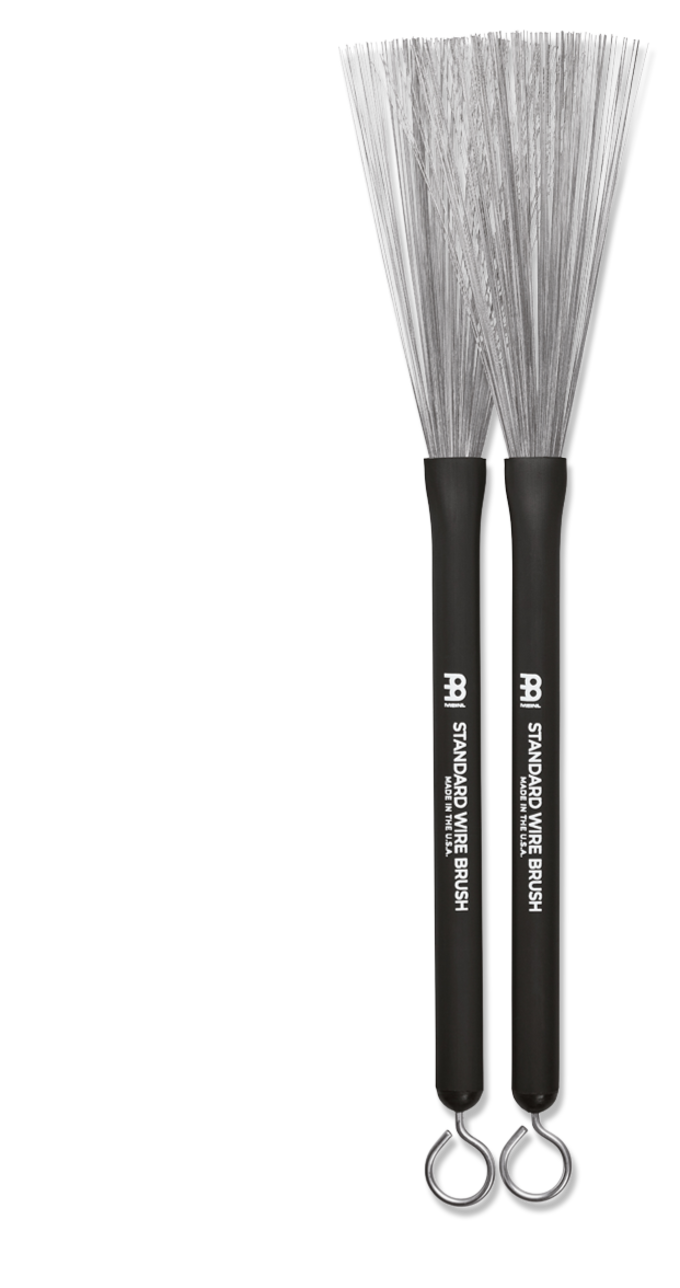
wires
Brushes use very soft and flexible materials which are typically fanned out, but can also be bundled together. Materials found in brushes consist of metal and nylon wires, bamboo and straw. Metal wires generate snappy and crisp slaps as well as lush sweeping tones. Nylon wires provide both flexibility and durability with a warmer sound. Straw material creates a unique soft attack and fat warmth.
Length
For our retractable brushes, the length is calculated from the beginning of the wires to the end of the push/pull rod. For all other models the distance is from the beginning of the wires to the end of the handle.
handle
In the brush line, there is a wide variety of handles offered featuring differing diameters and materials from rubber, aluminium, wood, and plastic.
Push/Pull Rod
Our Standard Wire Brush and Vintage Wire Brush feature retractable wires which allows the thin wires to be protected when not in use. The wires are then pushed out or pulled in by the rod at the end of the handle. Models with fixed wires don’t have a push/pull rod and the other retractable brushes can pulled out or pushed in by hand.
Diameter
Our brushes feature different sized diameters between 0.440“ and 1.120“, which allow every player to find the grip size or overall thickness for their preferred style or level of sensitivity needed.



